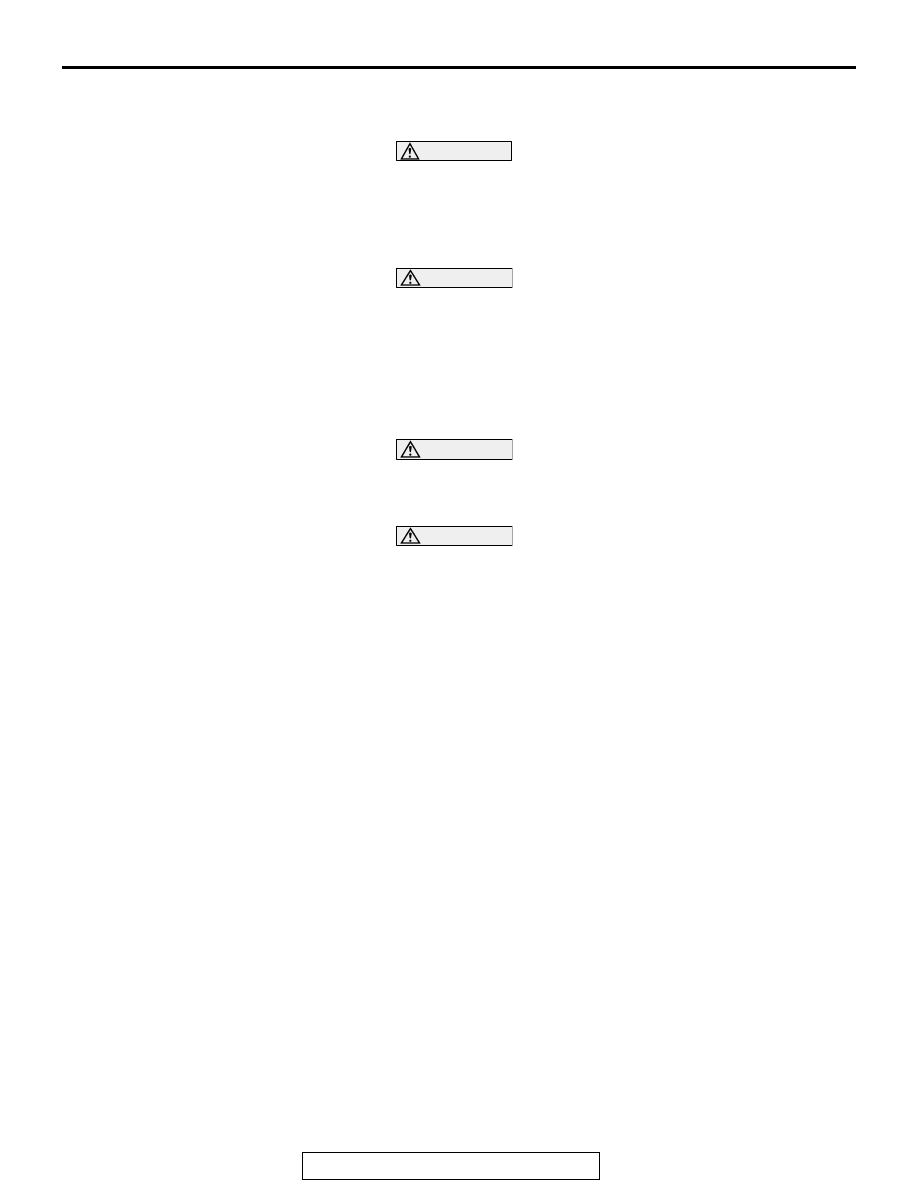Mitsubishi Lancer Evolution X. Manual - part 450

ON-VEHICLE SERVICE
TSB Revision
MULTIPORT FUEL INJECTION (MFI)
13A-865
THROTTLE BODY (THROTTLE VALVE AREA)
CLEANING
M1131001001625
WARNING
When touching the throttle valve, surely shut off the
driving circuits of the throttle valve. In the event that
the throttle valve is operated, a finger might be
injured as the result of being caught by the throttle
valve.
CAUTION
When the throttle body cleaning is performed, use scan
tool MB991958 to initialize the learning value (Refer to
GROUP 00, Precautions Before Service − Initialization Pro-
cedure for Learning Value in MFI Engine
1. Disconnect the electronic-controlled throttle valve connector.
2. Remove the air intake hose from the throttle body.
3. Remove the throttle body.
CAUTION
Do not spray the cleaning solvent directly to the throttle
valve.
4. Spray cleaning solvent on a clean cloth.
CAUTION
Make sure the cleaning solvent does not enter the motor
and the sensor through the shaft.
5. Wipe off the dirt around the throttle valve with the cloth
sprayed with cleaning solvent.
6. Install the throttle body.
7. Install the air intake hose.
8. Connect the electronic-controlled throttle valve connector.
FUEL PRESSURE TEST
M1131001902007
Required Special Tools:
• MB991958: Scan tool (M.U.T.-III Sub Assembly)
• MB991824: V.C.I.
• MB991827: USB Cable
• MB991910: Main Harness A
• MB991981: Fuel Pressure Gauge Set
• MB992001: Hose Adapter
• MB992049: Quick Connector
• MB992076: Injector Test Set
1. Release residual pressure from the fuel line to prevent fuel
spray. (Refer to
.)